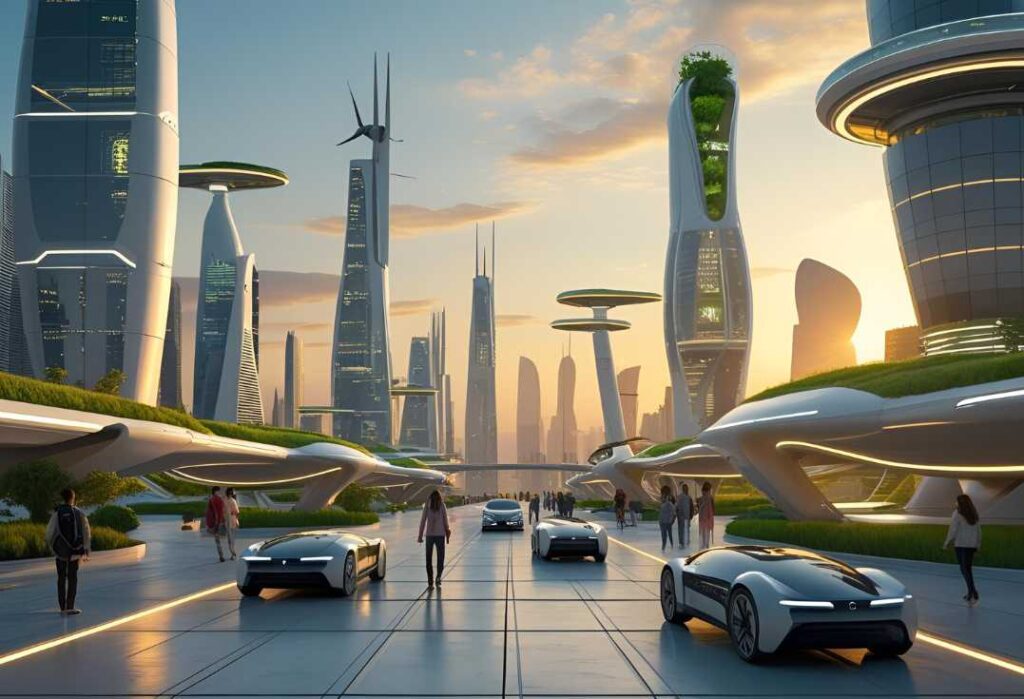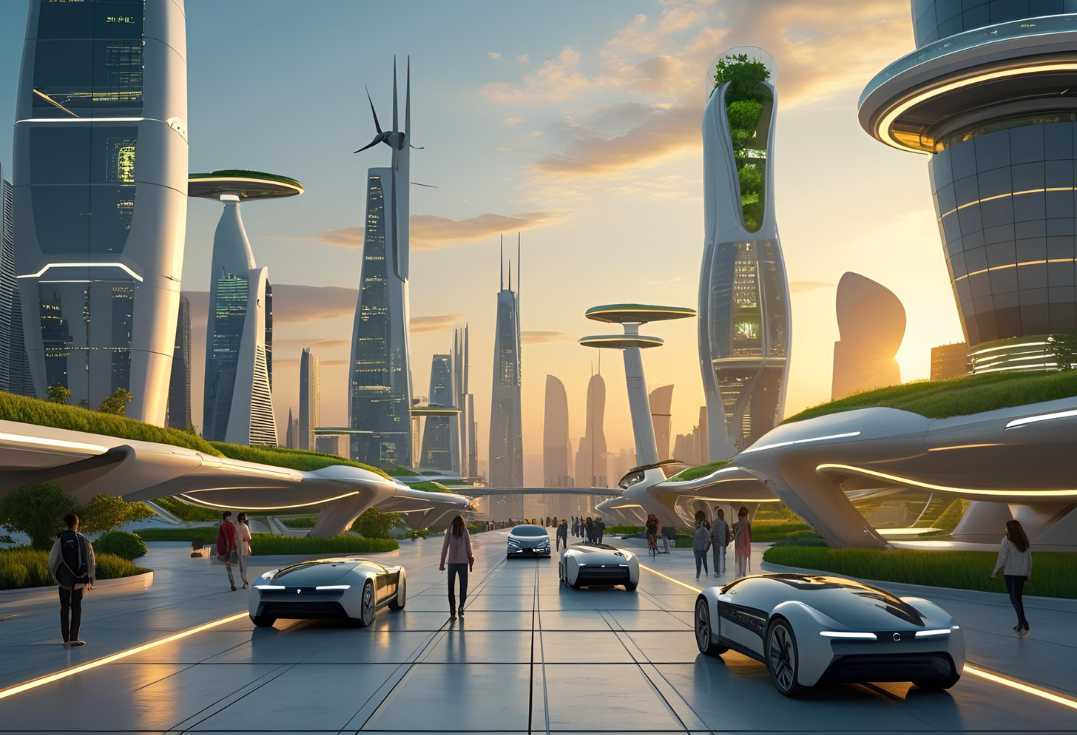
Introduction
As we move deeper into the 21st century, humanity faces complex urban challenges: population growth, environmental degradation, aging infrastructure, and increasing demands for resources and services. In response, governments, engineers, architects, and visionaries are reimagining what the cities of tomorrow should look like. These are the Future Cities—urban spaces that integrate advanced technology, sustainable practices, and human-centered design to offer a better quality of life.
But what exactly makes a city a “Future City”? Is it flying cars, AI-powered governance, or green skyscrapers? In truth, it’s all of these—and much more. Future cities are not just an aesthetic ideal; they are a functional response to the world’s most pressing issues.
1. The Need for Future Cities
1.1 Urbanization Trends
More than 55% of the world’s population lives in urban areas today, and by 2050, that figure is expected to reach nearly 70%. This unprecedented shift puts massive pressure on housing, transportation, water, electricity, healthcare, and education systems. Traditional urban models are proving insufficient.
1.2 Environmental Pressures
Cities account for over 70% of global carbon emissions and are at the center of the climate crisis. From rising sea levels to extreme heat, cities must evolve to survive and thrive under these new conditions.
2. Core Pillars of Future Cities
2.1 Smart Technology Integration
Future cities leverage the Internet of Things (IoT), Artificial Intelligence (AI), blockchain, and Big Data to manage urban systems. This includes:
- Smart grids that balance energy usage in real-time.
- Intelligent traffic systems that reduce congestion and pollution.
- Digital twins—virtual models of cities that simulate and optimize changes before implementation.
2.2 Sustainability and Environmental Design
Environmental sustainability is at the core of future cities. Key strategies include:
- Net-zero buildings that produce as much energy as they consume.
- Green roofs and urban forests to lower temperatures and improve air quality.
- Recycled water systems and waste-to-energy technologies.
2.3 Resilient and Adaptive Infrastructure
Cities must withstand climate disasters, pandemics, and economic disruptions. This involves:
- Flood-resistant architecture.
- Underground logistics networks.
- Modular buildings that adapt to population shifts.
2.4 Mobility Revolution
Transportation is being redefined through:
- Autonomous vehicles reducing accidents and traffic.
- Electric public transport powered by clean energy.
- Hyperloop systems for ultra-fast intercity travel.
- Urban air mobility (drones, flying taxis).
2.5 Citizen-Centric Design
Technology alone does not create a livable city. Social inclusion, accessibility, and equity are critical. Future cities will focus on:
- Affordable housing for all income levels.
- Mixed-use neighborhoods that reduce travel time.
- Digital participation platforms for local governance.
3. Real-World Examples of Future Cities
3.1 NEOM – Saudi Arabia
NEOM is a $500 billion megacity under construction in northwestern Saudi Arabia. Its most famous project, The Line, will be a 170-km car-free linear city powered entirely by renewable energy. Residents will be able to travel from one end to the other in just 20 minutes using high-speed transit systems.
3.2 Songdo – South Korea
Built from scratch, Songdo is a model of smart urban planning. It uses sensor-based systems for everything from traffic lights to waste disposal. Offices, schools, and hospitals are all connected digitally, reducing commute times and enhancing efficiency.
3.3 Masdar City – UAE
Masdar is one of the world’s most ambitious experiments in sustainability. It relies heavily on solar energy, wind farms, and water recycling. Although its pace has slowed, Masdar remains a pioneer in integrating green building principles into city-scale planning.
4. The Role of AI and Data in Future Cities
Artificial Intelligence is the brain behind many future city systems. Some use cases include:
- Predictive policing and crime prevention.
- AI-assisted healthcare to triage patients or detect outbreaks.
- Dynamic energy allocation based on real-time data.
- Sentiment analysis from social media to gauge public opinion.
But this brings challenges such as:
- Data privacy risks: Cities collecting massive amounts of personal data must secure it responsibly.
- Bias and discrimination: AI must be trained on inclusive datasets to avoid reinforcing inequality.
5. The Social and Ethical Dimension
Technological advancement must go hand-in-hand with human values. The smart city of tomorrow must also be:
- Inclusive: Accessible to people with disabilities, the older people, and marginalized communities.
- Transparent: Residents should know how data is used and have control over it.
- Culturally sensitive: Urban design should reflect the identity and heritage of its population.
6. Obstacles to Building Future Cities
Creating future cities is not easy. Major challenges include:
- High initial investment: Building smart infrastructure from scratch is costly.
- Regulatory hurdles: Outdated laws can slow innovation.
- Digital inequality: Not everyone has access to smartphones, the internet, or digital literacy.
- Public resistance: People may resist change due to privacy concerns or lack of trust.
7. The Future Is Collaborative
The success of future cities will depend on partnerships:
- Between governments and tech companies to build scalable solutions.
- Between universities and urban planners to train future generations.
- Between citizens and officials to ensure cities reflect real needs.
Conclusion
Future cities are more than just sci-fi dreams; they are the next logical step in urban evolution. While the challenges are real, so are the possibilities. From cleaner air and efficient transport to smart governance and resilient design, future cities offer a path toward a more sustainable, inclusive, and connected world.
Whether we build entirely new cities like NEOM or retrofit existing ones like New York and Tokyo, one thing is clear: the city of the future must serve both people and the planet.
The question is not if future cities will arrive, but how we will shape them—and who gets to decide.
More articles :
AI & Machine Learning: Then, Now, and Next
AI Agents & Autonomous Systems: The Future of AI
Why the PlayStation 5 is Still the Hottest Console in 2025

